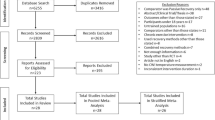Abstract
Acid proteolytic capacity in mouse cardiac muscle and in predominantly white (distal head of m. vastus lateralis) or predominantly red (proximal red heads of m. vastus lateralis, m. v. medialis, and m. v. intermedius) skeletal muscle was estimated 5 days after 3 h, 6 h or 9 h prolonged running at a speed of 13.5 m/min. The activities of acid protease and β-glucuronidase together with the rate of acid autolysis considerably increased in both skeletal muscle types, especially in red muscle, but did not increase in cardiac muscle. Acid proteolytic capacity and β-glucuronidase activity increased in relation to the duration of running. Protein content and oxidative capacity (the activities of citrate synthase and malate dehydrogenase) decreased in red skeletal muscle after 6 h and 9 h running. In white muscle only protein content slightly decreased after 9 h running. No corresponding changes were observed in cardiac muscle. Histopathological changes were traced in mixed skeletal muscle (m. rectus femoris). Necrotic lesions were observed in the red superficial area of m. rectus femoris after 6 h and, in particular, after 9 h running. The results show that prolonged submaximal running also produces lethal and sublethal skeletal muscle fibre injuries, as well as exhaustive exercise or temporary ischaemia as reported earlier. It is suggested that sublethal injuries precede lethal ones and that acid proteolytic capacity increases especially in the sublethally injured muscle fibres.
Similar content being viewed by others
References
Amenta JS, Sargus MJ, Venkatesan S, Shinozuka H (1978) Role of the vacuolar apparatus in augmented protein degradation in cultured fibroblasts. J Cell Physiol 94:77–86
Arstila AU, Hirsimäki P, Trump BF (1974) Studies on the subcellular pathophysiology of sublethal chronic cell injury. Beitr Path 152:211–242
Bajusz E, Rona G (1974) Cardiomyopathies. Urban and Schwarzenberg, München
Ballard FJ (1977) Intracellular protein degradation. In: Campbell PN, Aldridge WN (eds) Essays in biochemistry, Vol 13. Academic Press, London, pp 1–37
Barrett AJ (1972) Lysosomal enzymes. In: Dingle JT (ed) Lysosomes, a laboratory handbook. Noth-Holland, Amsterdam, pp 46–126
Bird JWC (1975) Skeletal muscle lysosomes. Front Biol 43:75–109
Fidziańska A, Strugalska H, Badurska B (1974) Histochemical and ultrastructural studies of the rat muscles after denervation. Folia Histochem Cytochem (Kraków) 12:321–328
Granit R (1970) The basis of motor control. Academic Press, New York
Hecht HJ, Schumann H-J, Kunde D (1975) Histologische und enzymhistochemische Befunde am Skelettmuskel der untrainierten Ratte nach intensiver physischer Belastung. Med Sport (Berl) 15:270–274
Highman B, Altland PD (1963) Effects of exercise and training on serum enzyme and tissue changes in rats. Am J Physiol 205:162–166
Kipshidze NN (1966) Role of functional factor in the pathogenesis of myocardial infarction. In: Raab W (ed) Prevention of ischemic heart disease. Charles C Thomas, Springfield, pp 67–73
Mäkitie J, Teräväinen H (1977) Histochemical studies of striated muscle after temporary ischemia in the rat. Acta Neuropathol (Berl) 37:101–110
Ruth GR, Van Vleet JF (1974) Experimentally induced selenium-vitamin E deficiency in growing swine: selective destruction of type I skeletal muscle fibres. Am J Vet Res 35:237–244
Reference deleted
Schumann H-J (1972) Uberlastungsnekrosen der Skelettmuskulatur nach experimentellem Laufzwang. Zentralbl Allg Pathol 116:181–190
Shannon AD, Adams EP, Courtice FC (1974) The lysosomal enzymes acid phosphatase and β-glucuronidase in muscle following a period of ischaemia. Austr J Exp Biol Med Sci 52:157–171
Stauber WT, Hedge A-M, Schottelius BA (1976) On the ionstimulated autolytic capability of ALD and PLD muscle homogenates. Life Sci 18:1441–1446
Vihko V, Rantamäki J, Salminen A (1978) Exhaustive physical exercise and acid hydrolase activity in skeletal muscle. A histochemical study. Histochemistry 57:237–249
Vihko V, Salminen A, Rantamäki J (1978) Acid hydrolase activity in red and white skeletal muscle of mice during a two-week period following exhausting exercise. Pflügers Arch 378:99–106
Vihko V, Salminen A, Rantamäki J (1979) Exhaustive exercise, endurance training and acid hydrolase activity in skeletal muscle. J Appl Physiol 47:43–50
Weinstock IM, Iodice AA (1969) Acid hydrolase activity in muscular dystrophy and denervation atrophy. In: Dingle JT, Fell HB (eds) Lysosomes in biology and pathology, Vol I. North-Holland, Amsterdam, pp 450–468
Wildenthal K, Poole AR, Dingle JT (1975) Influence of starvation on the activities and localization of cathepsin D and other lysosomal enzymes in hearts of rabbits and mice. J Mol Cell Cardiol 7:841–855
Author information
Authors and Affiliations
Rights and permissions
About this article
Cite this article
Salminen, A., Vihko, V. Acid proteolytic capacity in mouse cardiac and skeletal muscles after prolonged submaximal exercise. Pflugers Arch. 389, 17–20 (1980). https://doi.org/10.1007/BF00587923
Received:
Accepted:
Issue Date:
DOI: https://doi.org/10.1007/BF00587923




